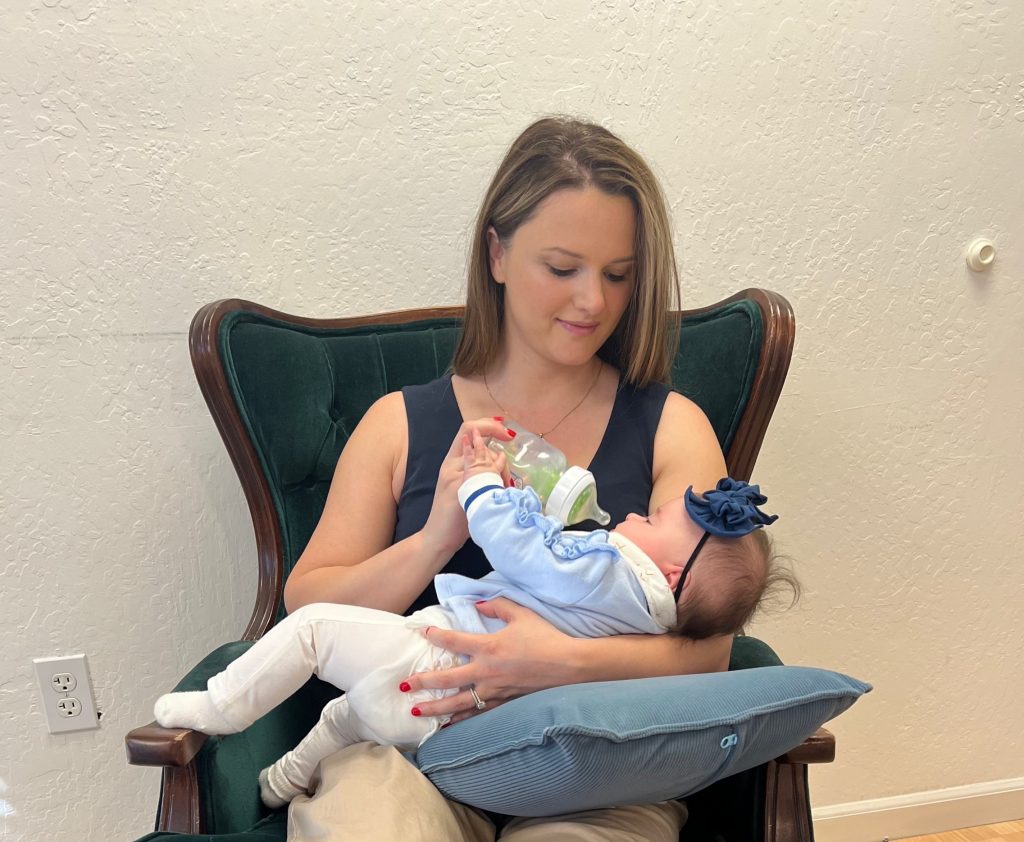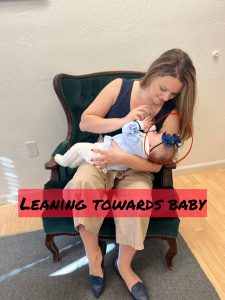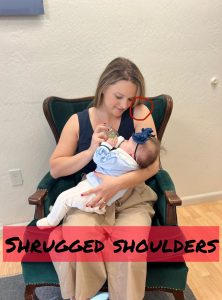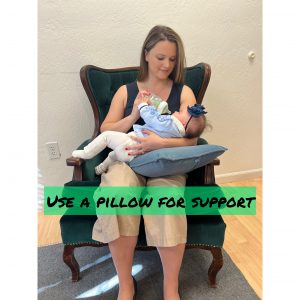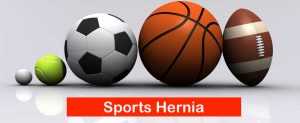Every parent knows that having baby means there are many sleepless nights ahead, but some parents do not realize the pain that can come with taking care of a baby. Without knowledge of proper ergonomics, parents and caregivers are at a higher risk for developing pain. Holding, nursing, and carrying a baby can put stress on the body. This stress can lead to injuries of the neck, back, shoulder, arms, and wrists.
Feeding
Feeding your baby requires supporting and holding your baby for many hours of the day. Whether you are breastfeeding or bottle feeding, this means staying in the same position for long periods of time. Just like adding a new workout routine, feeding can lead to pain in your back, neck, arms, shoulders, and wrists. Maintaining good posture while breastfeeding or bottle feeding is important to avoid unwanted pain. A previous breastfeeding ergonomic study with 400 women showed that 147 women had mechanical neck pain and 88 women had mechanical low back pain. Here is what not to do while feeding a baby:
Proper Ergonomics while feeding a baby:
- Bring your baby to your chest
- Don’t tense your muscles
- Try to limit looking down
- Use a pillow for support
Carrying or Holding
Part of parenthood is carrying your baby around. During the first years or so of a baby’s life, one of their main ways of transportation is through their parents’ arms! Carrying a newborn baby may be easy but once the baby gains more weight, you may feel challenged! It is important to carry your baby correctly to prevent unnecessary strain on your body. Ways not to maintain proper ergonomics are:
How to position yourself while holding your baby:
-
-
-
-
-
-
- Evenly distribute your weight
- Keep baby above hip level
- Maintain a neutral spine
- Switch arms and positions often
-
-
-
-
-
Lifting
Whether it is changing diapers, putting them in a car seat, or playing, you will be lifting your baby a lot. Lifting a baby incorrectly is a common way for injuries to happen! Using poor ergonomics when lifting your baby can lead to increased strain on ligaments, muscles, joints, tendons, and discs. It is important to maintain proper form while lifting your baby to prevent future injuries.
- Bend your knees when picking up and setting your baby down
- Use your knees to lift, not your back!
- Avoid locking your knees
Common conditions parents seek care for:
Injuries that are common in parents include mommy or nursing thumb, muscle strains or sprains, carpal tunnel syndrome, and neck/shoulder pain. As for breastfeeding women, a study showed that out of 249 women, 149(37.3%) had neck pain, 87(21.8%) had lower back/lumbar pain, 23(5.8%) had upper back pain, 14(3.5%) had shoulder pain, and 10(2.5%) had arm pain. These painful areas can arise from repetitive motion, overuse, or poor posture and ergonomics.
Nursing Thumb
Pain present in the base or tip of the thumb is described as nursing thumb or mommy thumb. The medical term for nursing thumb is de Quervain’s disease and is common in postpartum women. This occurs from repetitive motions that comes with holding or nursing a baby. Nursing thumb does not just happen to moms, but can also happen to dads and caregivers. When holding your baby, try to keep your thumb tucked in and wrist in a neutral position.
Carpal Tunnel Syndrome
The carpal tunnel is located in the wrist and has 9 tendons and one nerve (the median nerve) that pass through to the hand. Carpal tunnel is caused by compression of the median nerve and can be due to recurrent poor positioning, injury, swelling, or repetitive stress. Current evidence states that advice on proper positioning of the wrist while lifting, carrying, or feeding in addition to treatment, can prevent and provide relief for people with carpal tunnel syndrome. Treatment may include manual therapy of the wrist muscles, adjustments to the carpal bones, taping, rehabilitation exercises, or Graston technique.
Neck/Shoulder Pain
Neck and shoulder pain is another result from poor ergonomics. Shrugging shoulders while feeding or carrying can be a cause of neck and shoulder pain in parents. Research shows that neck and shoulder pain is prevalent in postpartum women! Treatment of neck and shoulder pain may consist of adjustments to the cervical spine or shoulder, manual therapy, taping, heat or ice, and rehabilitation exercises.
Muscle Sprain/Strain
A muscle strain occurs when a tendon or muscle is injured. Muscle sprains happen when ligaments or the connective tissue between bones, is injured. Straining or spraining of muscles can occur anywhere in the body. In parents, back, neck, or wrist sprain/strains are common. This can be caused by poor ergonomics while lifting, twisting, or overuse. According to a research study, parents often do not consider back care or posture when it comes to lifting their children which increases risk of low back strain. Muscle strain/sprains can be treated using manual therapy, massage, cupping, rehabilitation exercises, and spinal manipulation.
If you have any questions on the proper ergonomics of parenthood or are in need of pain relief, please feel free to contact us at Custom Chiropractor or schedule an appointment by visiting www.santaclaracustomchiro.com or by calling (408) 248-8700.
